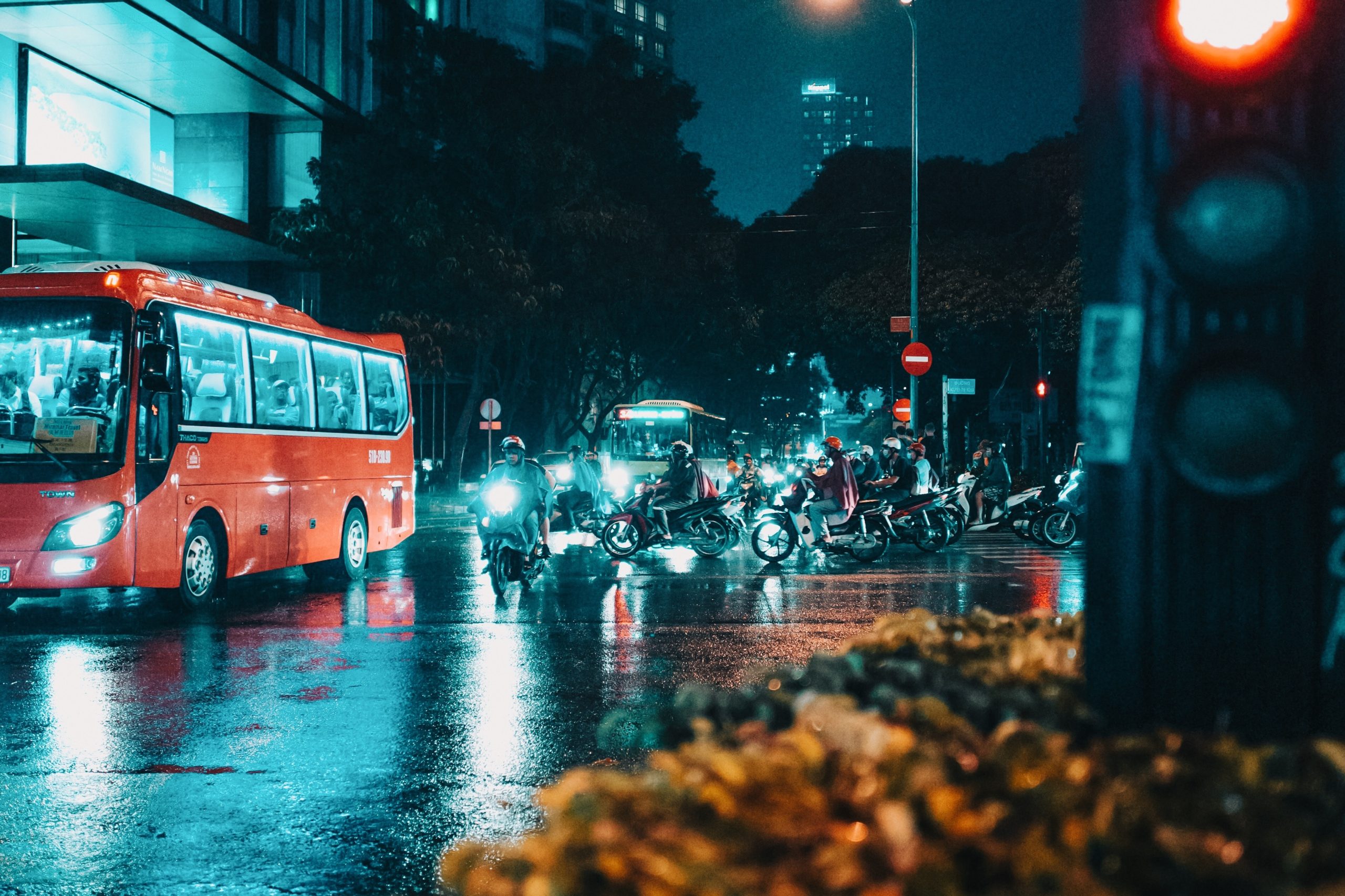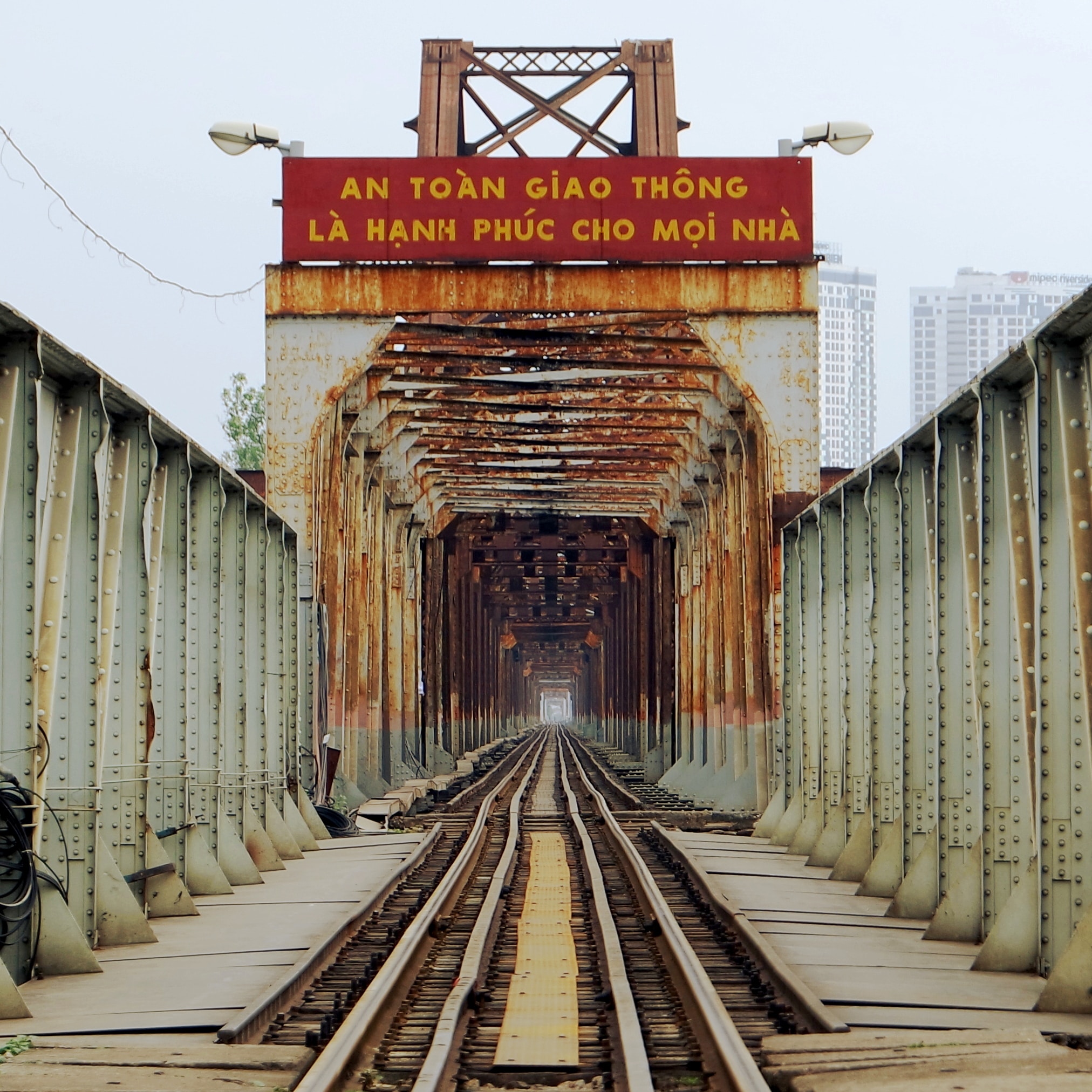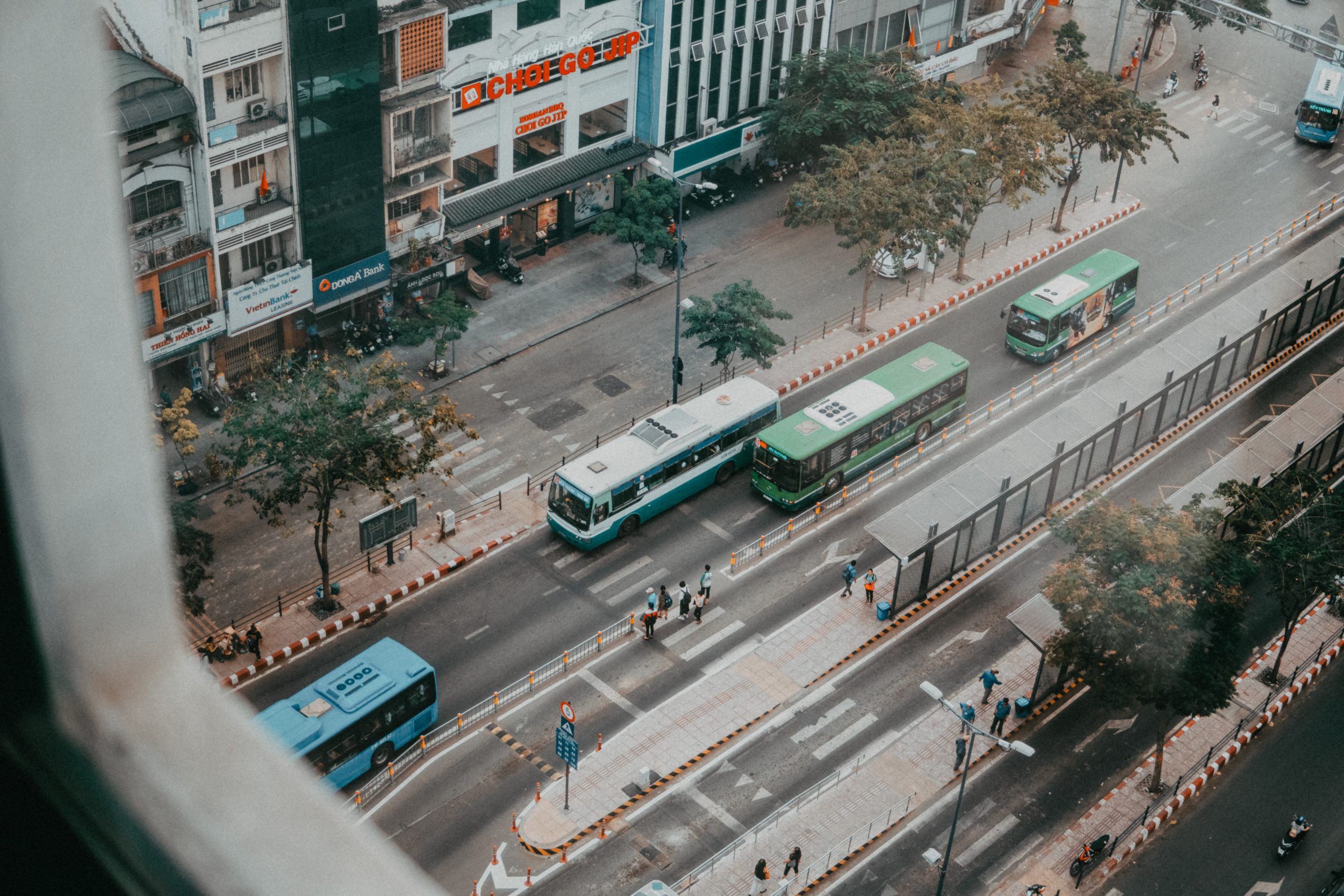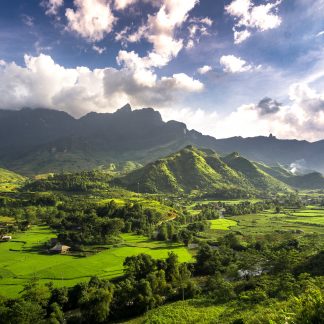Travelling in Vietnam: Trains and Buses
Being a country crawling with transportation systems, travelling in Vietnam is made an excessively easy task. While the cost of transportation is fairly affordable, a surefire way of getting from one destination to the other while saving up on cash is to make use of the trains and buses in Vietnam.
Sure it may be time-consuming, but a lot of the routes offer scenic views, and it is a great way of delving into the heart of Vietnam. Besides, skipping out on those plane rides contributes to sustainable, green travelling! Navigating the maze that is the railway and the buses can be overwhelming, and from safety to seats, there is lots of room for error. Read our guide on trains and buses in Vietnam to be as prepared as possible.
Contact us for a no obligation travel consultation for Vietnam | Look at a two week and a three week Vietnam Travel Itinerary
 Travelling in Vietnam is quite easy with a number of transportation options that are fairly affordable and easily accessible.
Travelling in Vietnam is quite easy with a number of transportation options that are fairly affordable and easily accessible.
Trains in Vietnam
The first thing that comes to mind when discussing trains in Vietnam is the Reunification Express. Interestingly, no one specific train carries this name; a whole range of trains run along this route, and the route has more of a connection to the name than the trains do. The French brought it to completion in 1936, linking Hanoi to Ho Chi Minh City. Even today it curves through the entire length of the country.
Wondering at the name? In 1954, Vietnam was divided into north and south. The end of the war in 1975 left the line a mangled mess of steel, but after extensive repairs, a train finally traversed the route from north to south once more. It was received at Ho Chi Minh City with great fanfare, as a symbol of the renewed unity between north and south Vietnam.
Train options in Vietnam
Overnight trains in Vietnam are easily available and fairly comfortable if you can afford the more comfortable classes. Additionally, they save on hotel bills as you travel through the night, and also cab fares to and from the airports, as the trains get you right from one city centre to the next.
The entire Hanoi- Ho Chi Minh City journey takes anything between 33 to 36 hrs depending on which train you take. However, there are several stops on the way, making getting around Vietnam a breeze. Here are some convenient train connections we recommend:
– Ho Chi Minh City – Nha Trang: 7h, day and night connections
– Nha Trang – Da Nang (close to Hoi An): 9-11h, day and night connections
– Hue – Ninh Binh: 12h, overnight
– Hue – Hanoi: 14h, overnight
– Hanoi – Lao Cai (close to Sapa): 8h, overnight
Train Classes
Trains have two classifications- SE (newer and faster) and TN (older and slower). Additionally, these are also split into compartments with and without an AC- SE trains have mostly air-conditioned compartments while TN trains still have non-AC compartments. All trains have different classes, sorted from the cheapest to the most expensive:
- Hard seat – wooden benches, mostly very crowded and people smoking.
- Soft seat – soft seats, partial recliners, similar to the more familiar regular seater trains.
- Hard sleeper – 6 beds in one cabin, not much padding, very little space, not very clean.
- Soft sleeper – 4 beds per cabin, comfortable, clean.
Though the national carrier Vietnam Railways operates the railways, private companies are allowed a piece of the pie. They attach an extra compartment to a train that offers more comfort or even luxury to passengers. Some, like the luxury compartments, are quite expensive, while others are cheaper and definitely worth it. These can be availed of on the distance between Hanoi and Lao Cai to get to Sapa and the mountains, or on the journey from Hanoi to Hue or Da Nang (close to Hoi An). Some of the compartments even serve meals with wine. Prices vary between $40 and 90, depending on the trip.
Vietnam is very safe for solo female travellers and is a very affordable travel destination | Get in touch to plan your trip
Toilets on Trains
Toilets on trains are not always clean, especially if you get on a train that has already been running for a couple of hours. They are rarely modern, even in SE trains, but are all western style and mostly spacious. There is often a separate sink outside for you to freshen up and brush your teeth.
There’s no meals in ordinary class. But, a small food cart comes around in the evening and morning to sell coffee, tea, drinks, beer and some snacks. Some trains also still have food compartments but we wouldn’t recommend joining them; smoking and drinking men tend to frequent them.
Safety on trains in Vietnam
In terms of safety, there isn’t much that can go wrong if you remain alert and look after your bags. There have been a couple of cases of thievery and bag snatching on trains and at stations. An easy way to avoid this is by always locking your door and keeping valuables on your body or below your head.
We also advise using locks to fasten your bags to straps or handles at night. While some cabins have charging ports, you’ll be asking for trouble if charging your phone while asleep or left unattended. Make sure you acquaint yourself with these and other tips regarding safety in Vietnam for a hassle-free journey.
Bookings train tickets in Vietnam
Booking trains in Vietnam is not much of a hassle- tickets are usually available even for a last-minute booking. Be advised, the trains are often booked out weeks to months in advance during peak months and TET holidays. Keep an eye on the calendar and book your tickets early, or you may have to resort to the less comfortable bus or expensive flight tickets. If you choose to travel with us, we will take care of ticketing for you.
The train stations can be quite confusing, especially if you have yet to get your boarding pass for check-in. Asia Someday often sends a guide along to drop you to the station, convert the ticket to a boarding pass and show you to the right platform.
Take an easy option, let us help you plan a memorable holiday to Indochina
 Trains in Vietnam are affordable, comfortable and fairly easy to book. There is a train catering to the budget as well as the luxury travellers.
Trains in Vietnam are affordable, comfortable and fairly easy to book. There is a train catering to the budget as well as the luxury travellers.
Buses in Vietnam
The buses in Vietnam are the cheapest long distance mode of transport – even cheaper than the trains. This makes backpacking in Vietnam fairly hassle-free. The sleeper buses for overnight distances may be crowded, but are relatively comfortable and notably clean. You can easily find sleeper buses all over Vietnam, and they contain three lines of bunk beds in width.
You’ll have to remove your shoes upon entry and put them in a plastic bag. Comply to this, as it helps maintain cleanliness within the bus. The ‘beds’ are basically almost-fully-reclining chairs. There’s a small ‘box’ at the bottom, that passengers use to store their shoes and bags. There is no overhead compartment, so we highly advise keeping your hand-luggage to a minimum. Tall people may struggle with lack of space, but otherwise it makes for quite a tolerable journey, and you can definitely get some sleep as well.
While hand baggage goes in the box, your main luggage goes into a trunk underneath the bus. The staff is not always careful and tend to just throw the bags in, so avoid carrying fragiles in it. Additionally, prepared to leave with it dirtier than when you start the trip. The quality of buses is better in the south than in the north, sometimes drivers and staff on the bus can be rude and they definitely don’t speak much English, and the same applies to the staff at the bus stations. But don’t let this deter you, it’s still a great experience.
 The buses in Vietnam are ideal for backpackers and budget travellers as they are the cheapest long distance mode of transport and are also comfortable and clean.
The buses in Vietnam are ideal for backpackers and budget travellers as they are the cheapest long distance mode of transport and are also comfortable and clean.
Shared Mini-Buses
In some regions, limousine van services are offered. These are mini-buses that can accommodate around 8 to 10 people plus the driver. They are extremely comfortable and convenient as they offer to pick-up and drop passengers to their hotel. But because it is a shared service, this convenience will add to the total journey time. However, the limousine vans often come with great features like WiFi, USB charging spots or just wonderfully comfortable seats.
 Mini-buses to travel internally can be extremely convenient and comfortable and come with great features.
Mini-buses to travel internally can be extremely convenient and comfortable and come with great features.
If you have more time than money, and if you want to truly experience and embrace the Vietnamese way of life, trains and buses are the way to go for you. It gives you views that no airplane can provide, and you get to witness real Vietnamese countryside. Travelling overnight saves you valuable time and money, as you save on a night’s stay in a hotel while travelling to your next destination.
Journeys between major destinations are rarely longer than 14 hours, and your journey will certainly be memorable. And if you want the best of both worlds, choose a fitting duration and itinerary, so half your trip comprises the ease of cars and planes, and the other of the fun of trains and buses. If our tips on travel in Vietnam have inspired you, click on ‘Plan Your Trip’. Leave the intricacies to us while you pack those bags.
helping you travel your way
We provide a helping hand to independent travellers who need assistance with planning and booking their trip. The primary goal is to turn your dream holiday into reality.








